Abstract
Good antibody responses usually follow infection with Campylobacter jejuni. A comparison of agglutination, complement fixation and immunofluorescence tests was done on 55 sera from 40 sporadic patients with diarrhoeal disease and positive cultures for C. jejuni. Results showed 82% positive with immunofluorescence, 62% by complement fixation but only 38% by agglutination, using two reference strains COP and MEL as antigens. Overall 90% of the 40 patients were positive by one or more serological tests. Paired sera from 15 patients showed a fourfold or greater rise in only five, confirming previous observations that antibody formation occurs early in the course of infection. Results also suggest that different test systems may be detecting antibodies of different specificities. Results confirm the value of serological tests, but further information on serotypes is required for selection of suitable reference strains.
Full text
PDF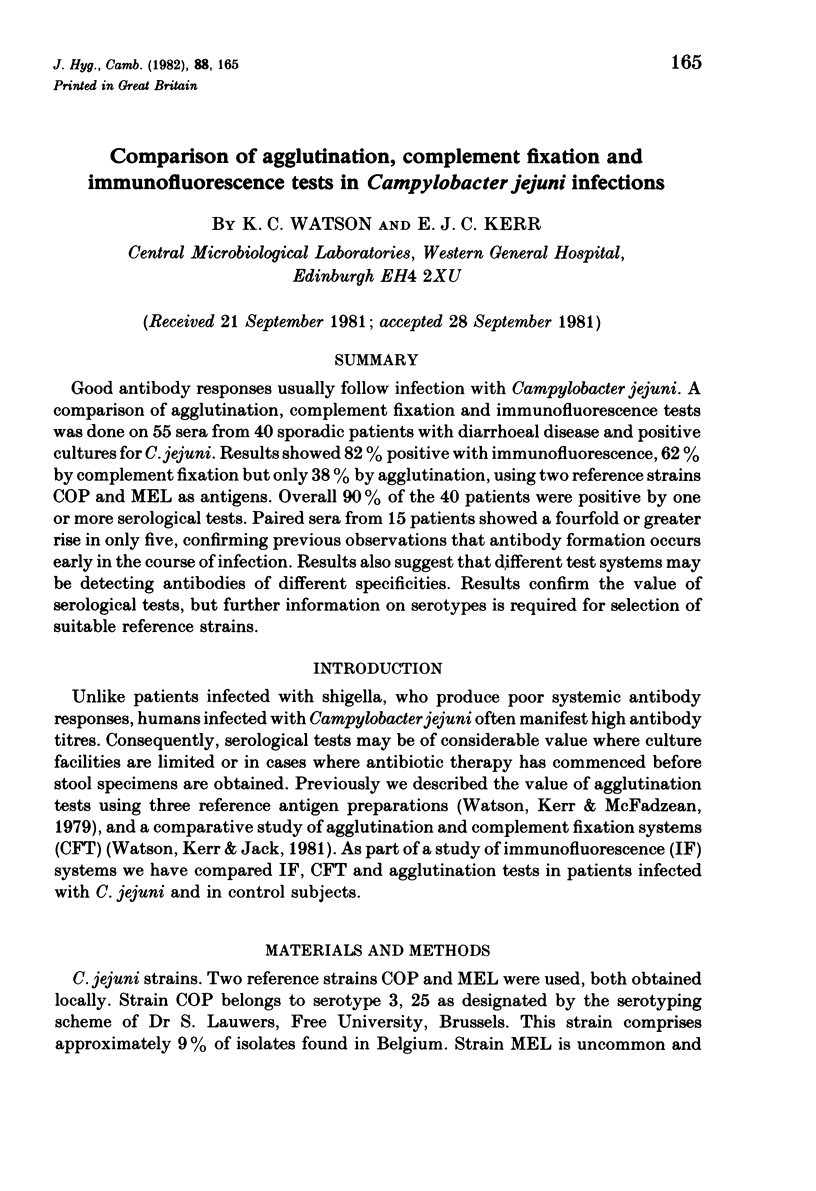
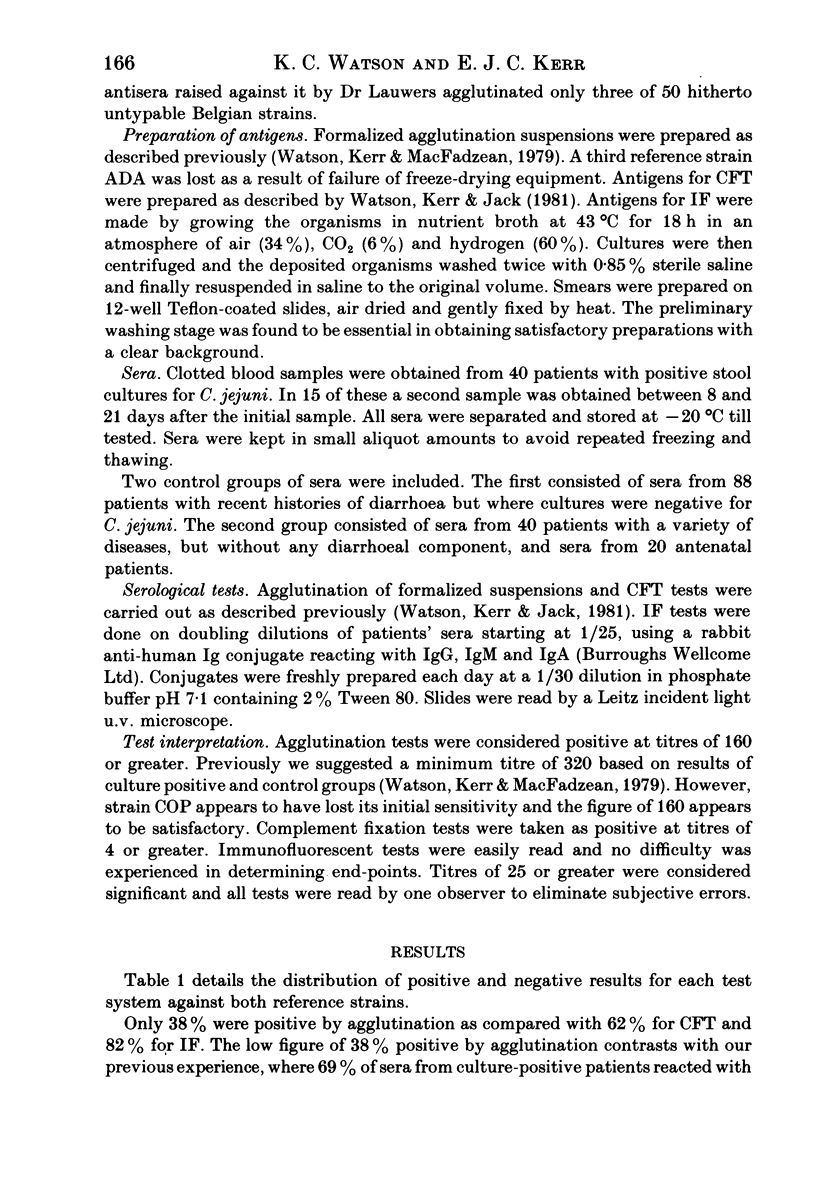
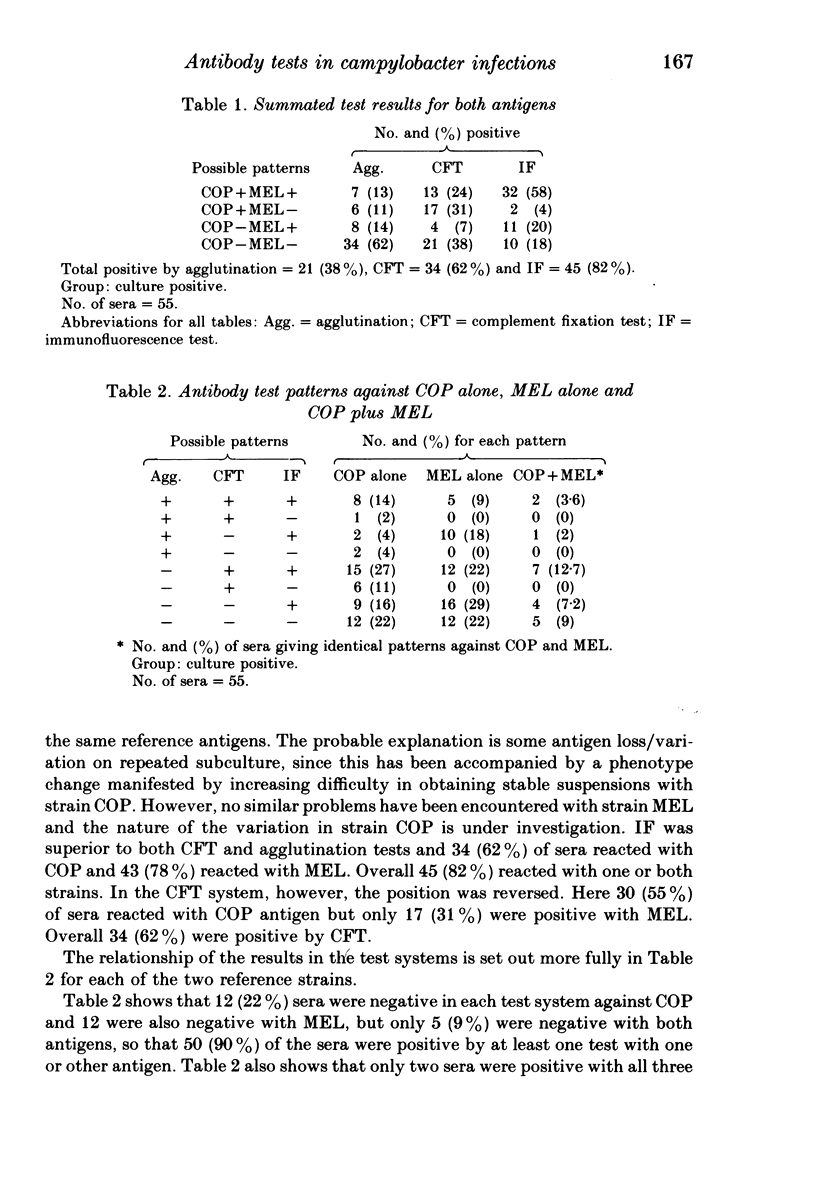
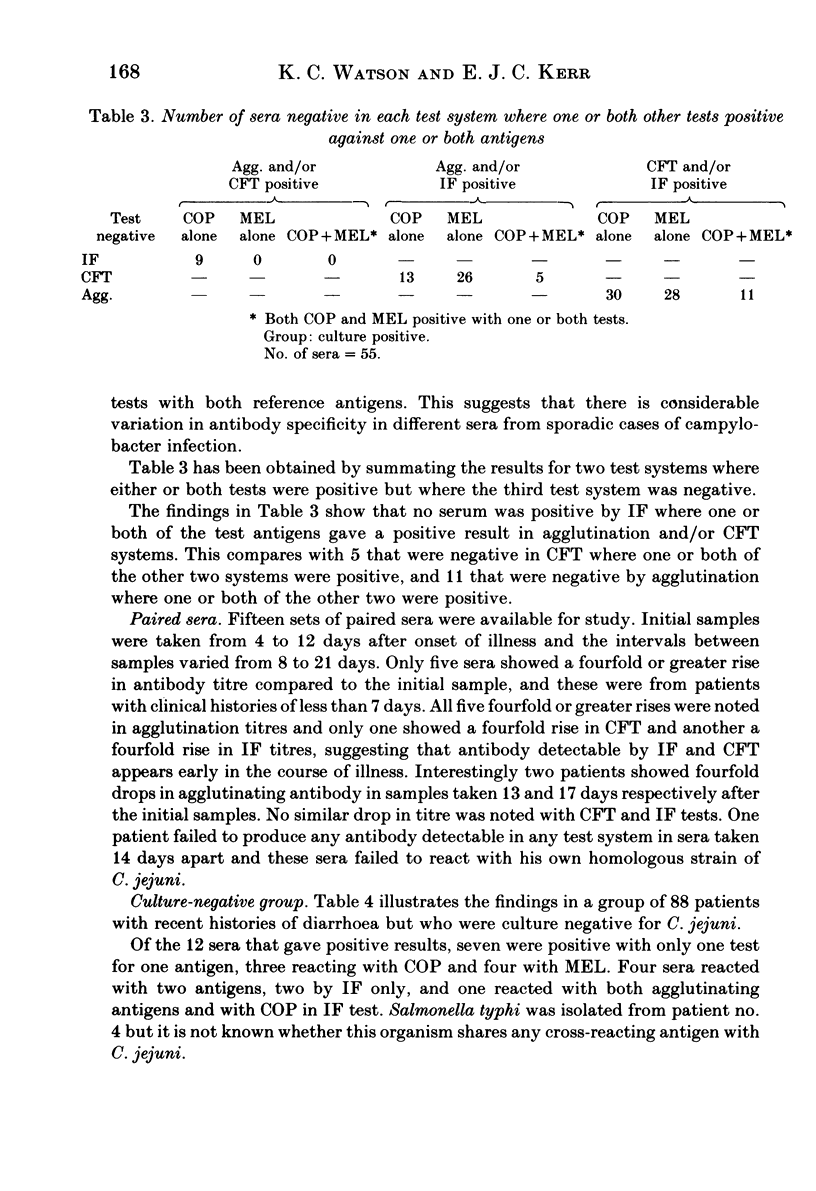
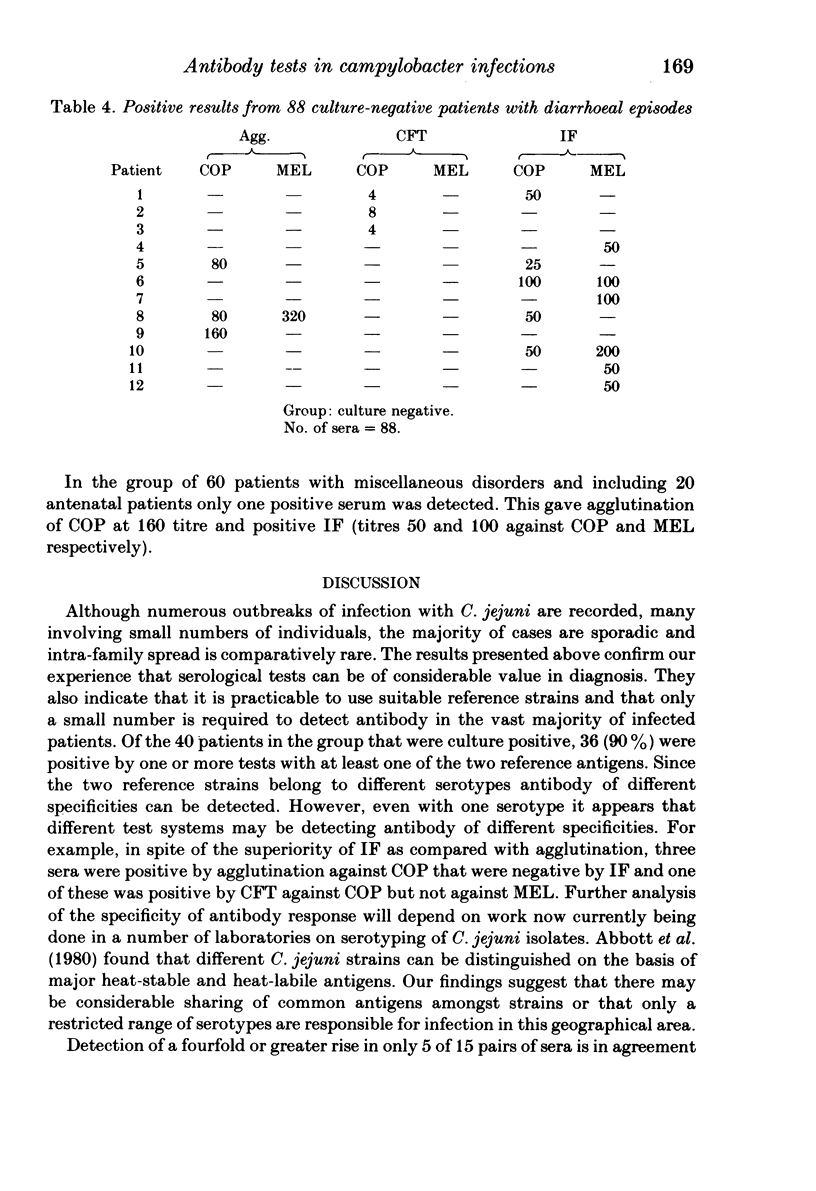


Selected References
These references are in PubMed. This may not be the complete list of references from this article.
- Abbott J. D., Dale B., Eldridge J., Jones D. M., Sutcliffe E. M. Serotyping of Campylobacter jejuni/coli. J Clin Pathol. 1980 Aug;33(8):762–766. doi: 10.1136/jcp.33.8.762. [DOI] [PMC free article] [PubMed] [Google Scholar]
- Jones D. M., Eldridge J., Dale B. Serological response to Campylobacter jejuni/coli infection. J Clin Pathol. 1980 Aug;33(8):767–769. doi: 10.1136/jcp.33.8.767. [DOI] [PMC free article] [PubMed] [Google Scholar]
- Skirrow M. B. Campylobacter enteritis: a "new" disease. Br Med J. 1977 Jul 2;2(6078):9–11. doi: 10.1136/bmj.2.6078.9. [DOI] [PMC free article] [PubMed] [Google Scholar]


